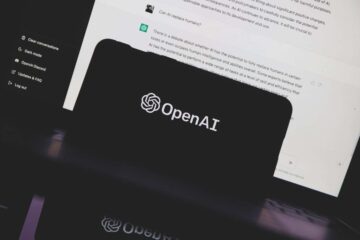Stuart Jeffries in The Guardian:
 One afternoon in the early 1980s, Tariq Ali, wearing only a towel, leapt into a room in Private Eye’s Soho offices. His mission was to liberate the magazine’s editor, Richard Ingrams, from a tiresome interview with Daily Mail hack Lynda-Lee Potter. “Mr Ingrosse, sir,” said Ali, posing as an Indian guru, “Time for meditation. Please remove all clothes.”
One afternoon in the early 1980s, Tariq Ali, wearing only a towel, leapt into a room in Private Eye’s Soho offices. His mission was to liberate the magazine’s editor, Richard Ingrams, from a tiresome interview with Daily Mail hack Lynda-Lee Potter. “Mr Ingrosse, sir,” said Ali, posing as an Indian guru, “Time for meditation. Please remove all clothes.”
It’s a terrible shame Potter is dead because I’d love to have heard her side of the story. Did she, as Ali reports, nearly faint before making her excuses and leaving? Was she taken in by the ruse that concluded with Ingrams and Ali giggling over pastries in the nearby Maison Bertaux? Or did she, as seems more likely, immediately recognise Britain’s foremost Lahore-born, Oxford-educated Trotskyist intellectual, after whom the Rolling Stones reportedly named their song Street Fighting Man – if only from his fabulous moustache? We will never know.
More here.
Enjoying the content on 3QD? Help keep us going by donating now.

 In a 1939 essay, the critic Philip Rahv
In a 1939 essay, the critic Philip Rahv  OpenAI’s new o3 artificial intelligence model has achieved a breakthrough high score on a
OpenAI’s new o3 artificial intelligence model has achieved a breakthrough high score on a  While
While  A twelve-hour opening shift and I dripped snot on the first customer’s debit card. But that’s Christmas tree season. Other than the barrel fire, there’s no place to get warm, so I wore fleece thermals with jeans on top, pockets full of pine needles already. Plus a hoodie and a blanket-lined denim trucker jacket that passes for hip. Ty doesn’t wear a coat, just three Carhartt hoodies on top of each other. Jack wears a knee-length puffer jacket from Goodwill. Brian wears a hoodie with the hood cinched tight around his face and his beard poking out. He looks the most like an elf. He also looks the most like Santa. Kids like to bring up one or the other. Sometimes we try to wear gloves, but they get caked in sap.
A twelve-hour opening shift and I dripped snot on the first customer’s debit card. But that’s Christmas tree season. Other than the barrel fire, there’s no place to get warm, so I wore fleece thermals with jeans on top, pockets full of pine needles already. Plus a hoodie and a blanket-lined denim trucker jacket that passes for hip. Ty doesn’t wear a coat, just three Carhartt hoodies on top of each other. Jack wears a knee-length puffer jacket from Goodwill. Brian wears a hoodie with the hood cinched tight around his face and his beard poking out. He looks the most like an elf. He also looks the most like Santa. Kids like to bring up one or the other. Sometimes we try to wear gloves, but they get caked in sap. ‘A Letter is a joy of Earth –/It is denied the Gods’, Emily Dickinson wrote in 1885, a year before she died, aged fifty-five, at her home in Amherst, Massachusetts. It was a joy she indulged freely. This monumental new edition of her correspondence contains 1,304 items, including all the previously published letters, further uncollected material and some two hundred ‘letter-poems’. Still, all this represents just a fraction of Dickinson’s total correspondence.
‘A Letter is a joy of Earth –/It is denied the Gods’, Emily Dickinson wrote in 1885, a year before she died, aged fifty-five, at her home in Amherst, Massachusetts. It was a joy she indulged freely. This monumental new edition of her correspondence contains 1,304 items, including all the previously published letters, further uncollected material and some two hundred ‘letter-poems’. Still, all this represents just a fraction of Dickinson’s total correspondence. Bob Dylan is so inherently unclassifiable that, when the great filmmaker Todd Haynes made
Bob Dylan is so inherently unclassifiable that, when the great filmmaker Todd Haynes made  Andrew Cassy had spent his working life in a telecommunications research department until a diagnosis of Parkinson’s disease in 2010 pushed him into early retirement. Curious about his illness, which he came to think of as an engineering problem, he decided to volunteer for clinical trials. “I had time, something of value that I could give to the process of understanding the disease and finding good treatments,” he says.
Andrew Cassy had spent his working life in a telecommunications research department until a diagnosis of Parkinson’s disease in 2010 pushed him into early retirement. Curious about his illness, which he came to think of as an engineering problem, he decided to volunteer for clinical trials. “I had time, something of value that I could give to the process of understanding the disease and finding good treatments,” he says. At first it seemed that we were doomed to bear witness to a grim spectacle, a media frenzy over the appalling details of a nauseating crime that left its victim, in her own words, “
At first it seemed that we were doomed to bear witness to a grim spectacle, a media frenzy over the appalling details of a nauseating crime that left its victim, in her own words, “ It has been a ghastly year for American women — at least those of us who are not looking forward to being ruled by a claque of cartoon chauvinists — but a pretty rich year for women in the movies. One of 2024’s biggest hits featured an unfairly maligned woman who channels her galvanic anger into a fight against fascism. (I’m talking, of course, about “Wicked.”) Demi Moore gave a scenery-chewing performance in “The Substance,” a gruesome body horror film about the pressure on women to stay nubile. Amy Adams starred in Marielle Heller’s supernaturally inflected “Nightbitch,” in which a woman starts to go feral, perhaps literally, amid the tedium of early motherhood. Mikey Madison was incandescent as a street-smart sex worker from a post-Soviet country in “Anora,” a movie that takes the silly Cinderella fantasy behind “Pretty Woman” and explodes it.
It has been a ghastly year for American women — at least those of us who are not looking forward to being ruled by a claque of cartoon chauvinists — but a pretty rich year for women in the movies. One of 2024’s biggest hits featured an unfairly maligned woman who channels her galvanic anger into a fight against fascism. (I’m talking, of course, about “Wicked.”) Demi Moore gave a scenery-chewing performance in “The Substance,” a gruesome body horror film about the pressure on women to stay nubile. Amy Adams starred in Marielle Heller’s supernaturally inflected “Nightbitch,” in which a woman starts to go feral, perhaps literally, amid the tedium of early motherhood. Mikey Madison was incandescent as a street-smart sex worker from a post-Soviet country in “Anora,” a movie that takes the silly Cinderella fantasy behind “Pretty Woman” and explodes it.